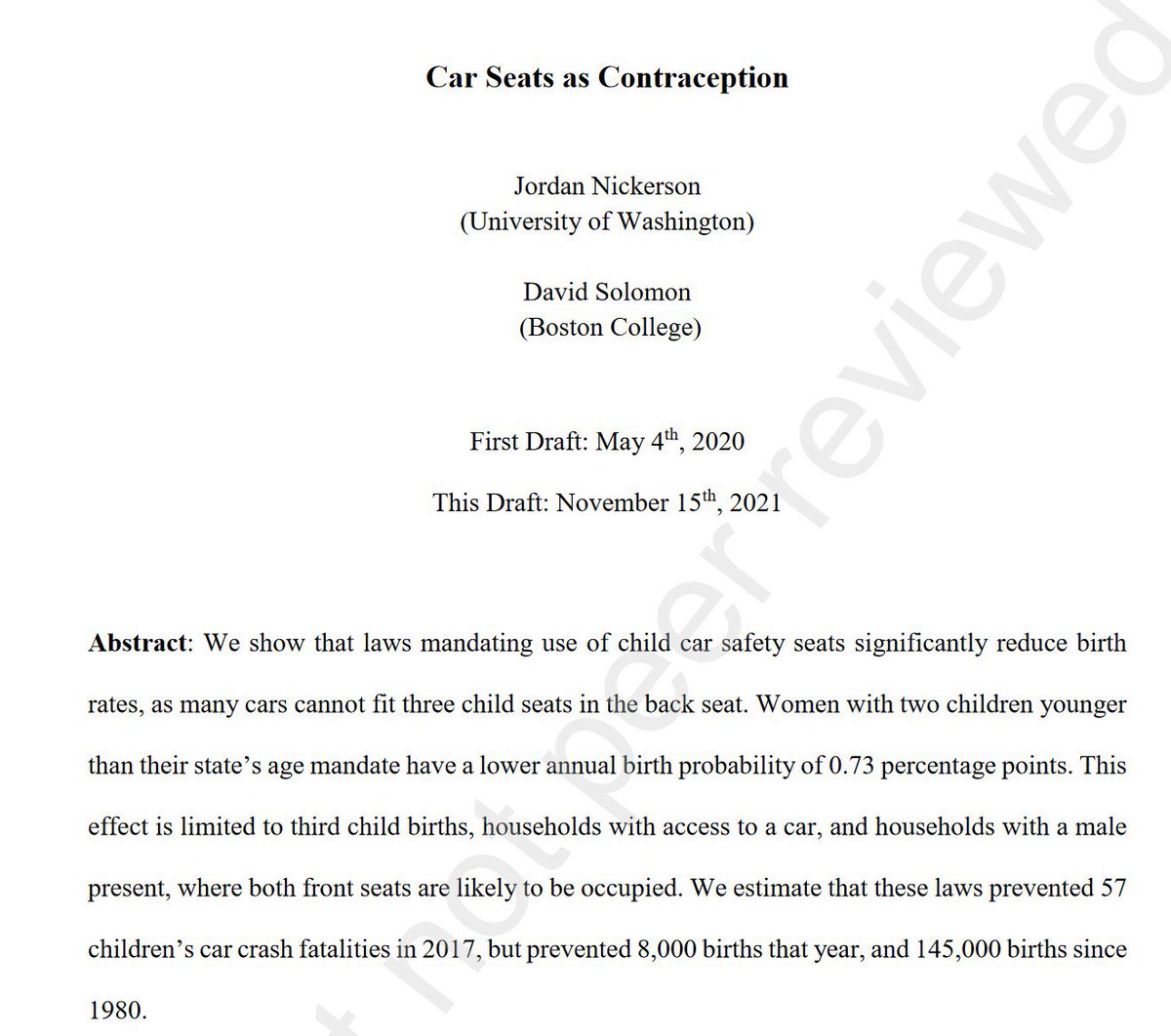I nominate car seats as an example of statistical murder:
This paper finds car seat laws saved 57 kids in 2017… but also reduced births by 8,000 that year (& 145,000 since 1980!) as families held off having more than two kids as their cars couldn’t hold more seats!
With $1.6B spent on booster seats in 2017, not even counting for the overhead, we’d expect to see at least 400 lives saved using the engineering standard of about $4M value of life estimate.
Robert Zubin calls this statistical murder:
The life of an astronaut is intrinsically precious, but no more so than that of anyone else. Let’s therefore consider how much other government programs spend to save people’s lives. Based on data from hundreds of programs, policy analyst John D. Graham and his colleagues at the Harvard Center for Risk Analysis found in 1997 that the median cost for lifesaving expenditures and regulations by the U.S. government in the health care, residential, transportation, and occupational areas ranges from about $1 million to $3 million spent per life saved in today’s dollars. The only marked exception to this pattern occurs in the area of environmental health protection (such as the Superfund program) which costs about $200 million per life saved.
Graham and his colleagues call the latter kind of inefficiency “statistical murder,” since thousands of additional lives could be saved each year if the money were used more cost-effectively. To avoid such deadly waste, the Department of Transportation has a policy of rejecting any proposed safety expenditure that costs more than $3 million per life saved. That ceiling therefore may be taken as a high-end estimate for the value of an American’s life as defined by the U.S. government.
By DoT’s own standards, the booster seat regulations need to be eliminated.
What are other examples of statistical murder?
